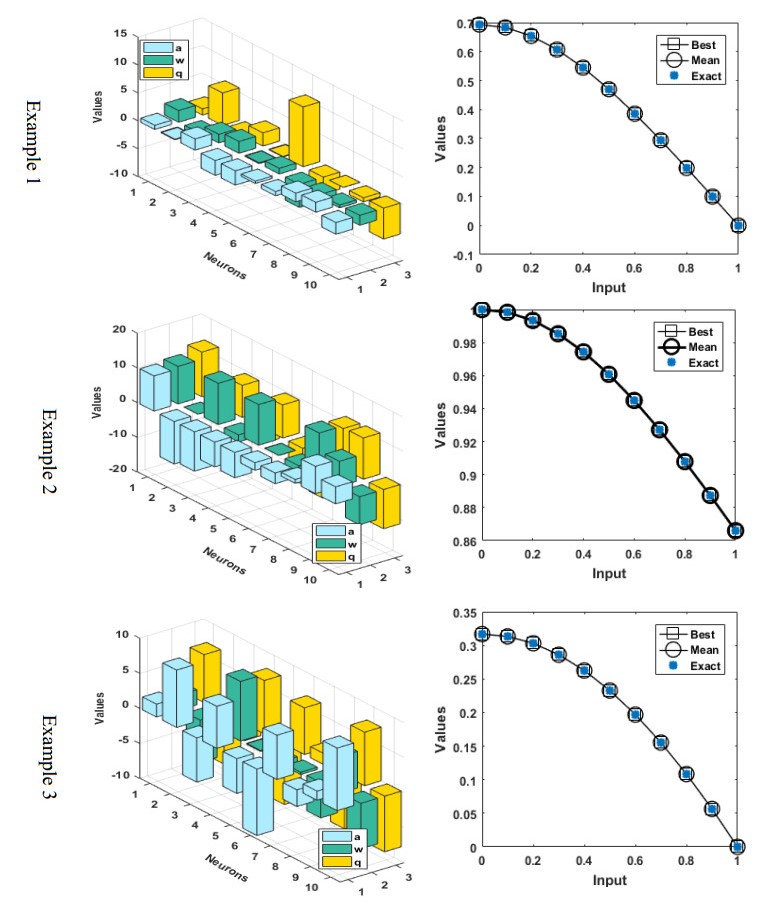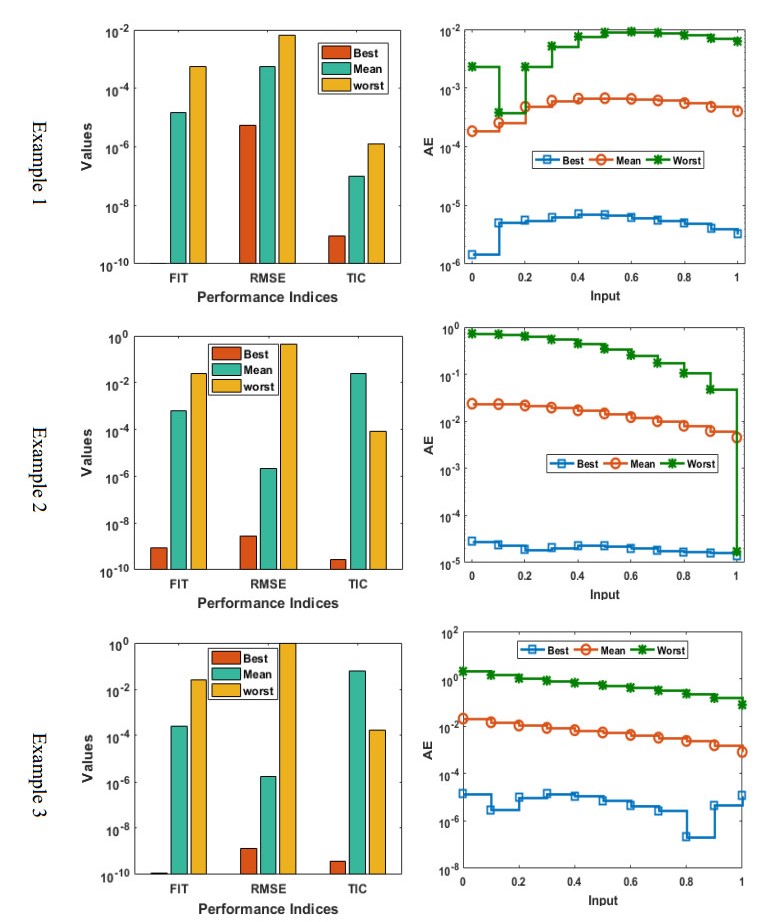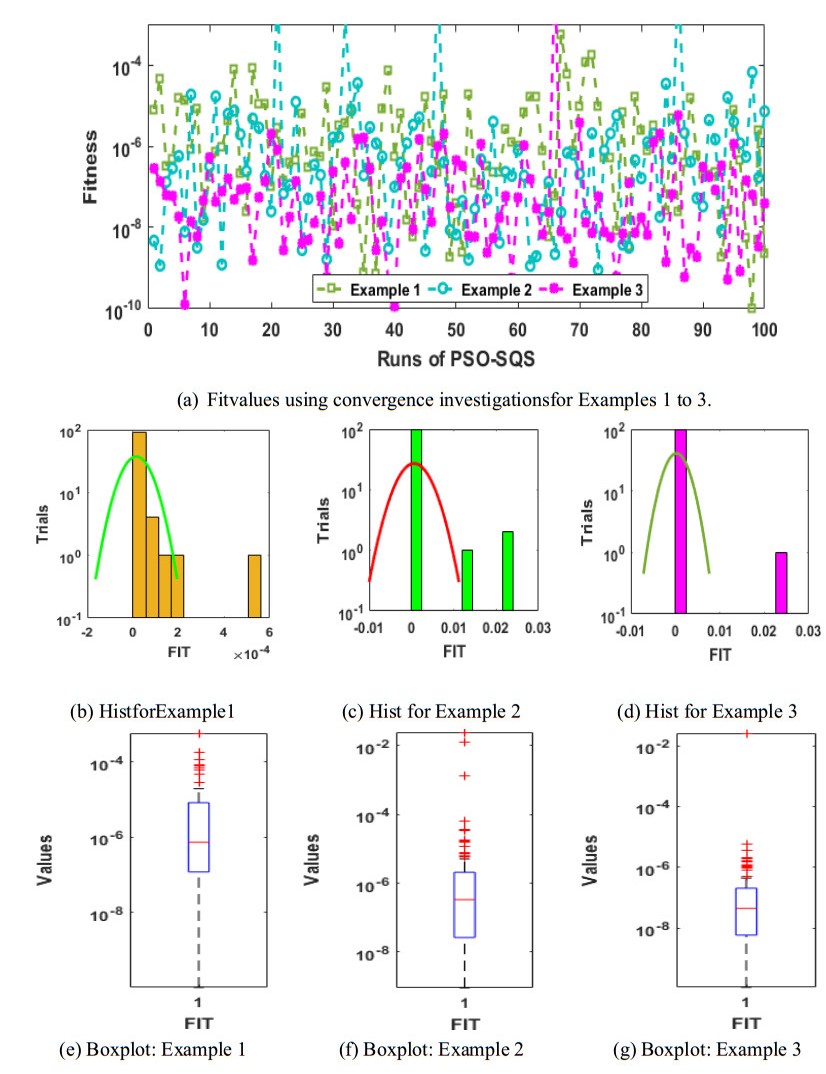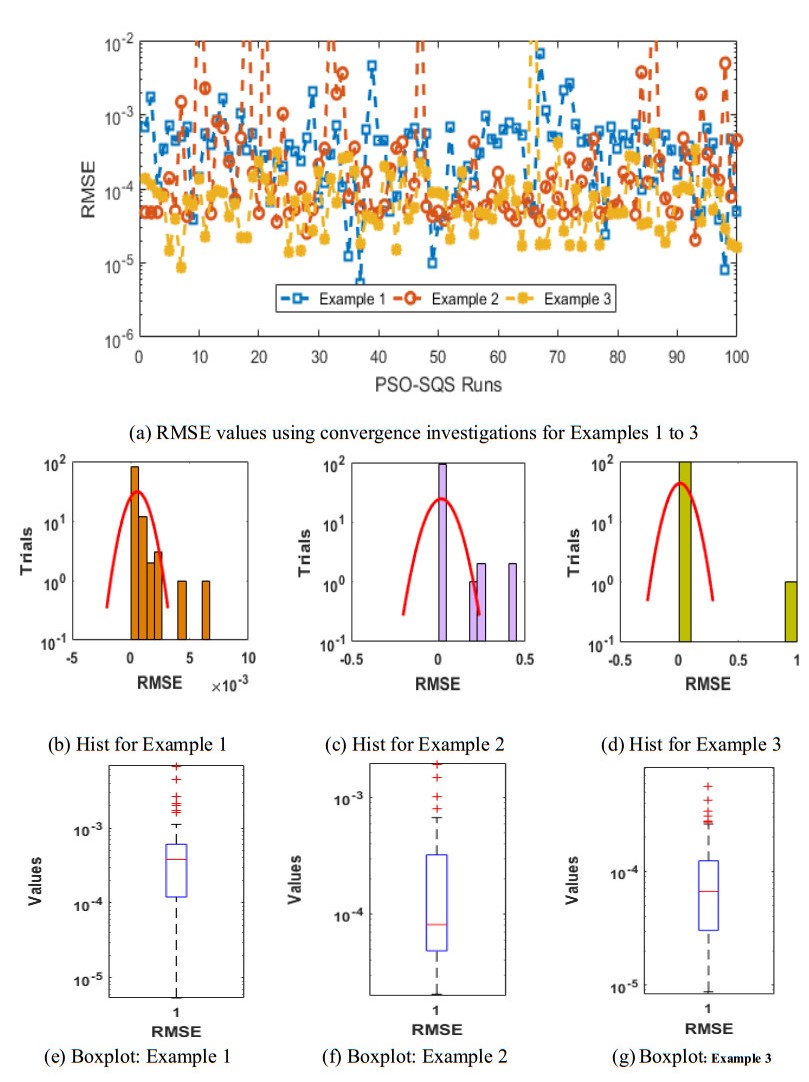1.
Introduction
The singular based models have gotten much importance due to its valued applications in physiology, physics and mathematics submissions. The Lane-Emden based model is one the historic paramount singular model introduced by famous astrophysics Lane and the further explored by Emden [1,2]. The general form of the second order Lane-Emden singular nonlinear model (SO-LES-NM) is given as [3]:
where i1 and i2 are constants, σ is the shape factor, while g(η,v) is known as the real valued continuous function.
The singular Lane-Emden nonlinear systems are widely implemented to solve an assortment of phenomena in the fields of physical science [4], gaseous star density [5], electromagnetic theory [6], morphogenesis study [7], stellar structure model [8], study of mathematical physics [9], oscillating magnetic fields [10], dusty fluid system [11] and an isotropic standard [12]. The singular models due to singularity are found to be hard and grim at the origin. A small number of numerical and analytical approaches are available to tackle such nonlinear singular systems are given in these references [13,14,15,16].
All above-mentioned approaches shave their specific sensitivity, efficiency, potential and perfection, as well as, weaknesses, disadvantages, imperfections, flaws and demerits over one another. The potential of the wide-ranging computing heuristic of the scheme is applied to the singular models using the extensive approximation aptitude of artificial neural networks (ANNs) mutually with the local and global methodologies [17,18,19,20,21,22,23]. Some notable illustrations contain mosquito dispersal study in a heterogeneous conditions [24], nonlinear dusty plasma system [25], nonlinear functional differential singular models [26,27], plasma physics studies [28], Thomas-Fermi system [29], HIV infection system of CD4+ T cells [30], biological prey-predator model [31], nonlinear singular periodic differential system [32], nanotechnology systems [33], Jeffery Hamel flow problem [34], corneal shape system based on eye surgery [35], singular differential model [36] and atomic physics system [37].
These prospective and potential submissions demonstrated the importance, value and significance of the numerical stochastic based computing solvers in terms of exactitude, stability and convergence. Consequently, the novel features of the Gudermannian neural network (GNN) are designed together with particle swarm optimization (PSO) and the sequential quadratic programming scheme, i.e., GNN-PSO-SQPS to solve the SO-LES-NM.
The motive of this research work is to solve SO-LES-NM by integrating the intelligent computing approach based on the GNN-PSO-SQPS. The innovative features of the GNN-PSO-SQPS are given as follows:
● A novel computingGNN-PSO-SQPSintelligentsolveris exploited and explored using the GNN along with the hybrid-combination of PSO-SQPS.
● The designed GNN-PSO-SQPS are tested precisely and accurately for solving three different problems of the SO-LES-NM.
● The coinciding of the outcomes achieved by the proposed GNN-PSO-SQPS and the exact results demonstrations the correctness of the scheme to solve SO-LES-NM.
● The results through proposed GNN-PSO-SQPS for single/multiple runsvia performance investigations of mean, root mean square error (RMSE), semi inter quartile range(S-I-R), Theil's inequality coefficient (TIC), median and standard deviation certified the competence, consistency, precision, accuracy and correctness of the designed GNN-PSO-SQPS.
The rest parts of this research paper are given as: The methodology is given in Sec 2, the performance indices information is given in Sec 3, the detail of numerical results together with future research clarifications is given in Section 4.
2.
Materials and method
In this section, the design of the differential operator GNN is presented to solve the SO-LES-NM. The detail of the differential model, fitness function (FF) and optimization using the suggested PSO-SQPS are provided.
2.1. Proposed procedure: Gudermannian function
The models based on neural network are familiar to provide the reliable, standardized and consistent solutions for a number of applications indifferent fields. In the below modeling, ˆv(η) represents the obtained outcomes from the GNN-PSO-SQPS together with its nth derivatives are given as:
where, m and n represent the neurons and derivative order, respectively. The activation function is h, whereas, a, w and q are the unidentified weight vectors defined as W=[a,w,q], for a=[a1,a2,a3,...,am], w=[w1,w2,w3,...,wm] and q=[q1,q2,q3,...,qm]. The literature form of the Gudermannian function is given as:
The Gudermannian activation function using the above equation becomes as:
To solve the SO-LES-NM, the formulation of FF using the mean squared error metric is written as:
where ξFIT−1and ξFIT−2 are the unsupervised error functions connected to the SO-LES-NM and relevant conditions of the SO-LES-NM (1) are given as:
where Nh=1,ˆvk=ˆv(ηk),g(ηk,ˆv)=g(ηk,ˆv(ηk))and ηk=kh.
While the networks presented in (6, 7), used Gudermannian function (3) and its derivatives as a activation function. Now after learning of the weights of the networks, one can optimize the fitness/cost function in (6, 7) and accordingly the solution of system (1) is approximately by proposed methodology.
2.2. Optimization of the network: PSO-SQPS
The capability of the ANNs based optimization models to solve the SO-LES-NM using the designed GNN-PSO-SQPS.
PSO is used as an alteration of the genetic algorithm and work as a global search method [38,39]. PSO is an easy implementation, needs less memory and global search optimization process introduced in the previous century [40]. Recently, PSO is applied in many applications like as Some recent PSO applications are traveling salesman problem [41], SFO-DTC induction motor drive [42], to evaluate the parameters of the reaction kinetic parameters [43], prediction of asphalting precipitation [44], reducing cost and increasing reliability [45] and object detection in autonomous driving [46].
To modify the PSO parameters, the scheme provides optimal iterative solutions, PΦ−1LB and PΦ−1GB denote the swarm's position and velocity, written as:
where Vi and Xi denote the velocity and position, ℜ1 and ℜ2 are the constant values of the accelerations, while Ψ∈[0,1] shows the weight inertia vector.
In order to perform the rapid convergence, the global PSO approach is hybridized with an appropriate local search scheme taking the PSO results. Therefore, an operative local search scheme named as SQS is executed to regulate the obtained outcomes through the GNN-PSO-SQPS. Some latest applications of SQS are transient heat conduction model [47], geometric optimization of radioactive enclosures [48], nonlinear predictive control model [49], cognitive radio system [50] and optimal management of automated vehicles at intersections [51]. The detail of the optimization procedure using the hybrid of PSO-SQPS are tabulated in the pseudo code Table 1.
3.
Performance form
The presentation of two different measures for solving the SO-LES-NM are constructed in terms of the RMSE and TIC that are executed to verify the proposed PSO-SQPS, the mathematical notations of these procedures are given as:
4.
Result simulations
The detailed simulation based results of the numerical results through the GNN-PSO-SQPS for the SO-LES-NM are described in this section.
Example1: Consider the SO-LES-NM (1)having exponential function g(η,v)=e2v(η)−0.5ev(η) as:
For the Eq (12), the FF becomes as:
The true solution of the Eq (12) is ln2−ln(η2+1).
Example 2: Consider the SO-LES-NM (1) involving fifth order nonlinearity for g(η,v)=v5(η) as:
For the Eq (14), the FF becomes as:
The true solution takes the form as (3η2+3)12.
Example3: Consider the SO-LES-NM (1) involving exponential function g(η,v)=ev(η) as:
For the Eq (16), the FF becomes as:
The true solution of the Eq (16) is ln(4−2√2(3−2√2)η2+1)2.
The optimization for all the examples of the SO-LES-NM optimized by the hybrid of PSO-SQPS using the Gudermannian activation function for hundred independent runs to get the system variables of the parameter. A set of the best weights authenticate the numerical results by taking 10 neurons and the mathematical notations of these proposed outcomes is written as:
Figure 1 represents the set of the best weights for 10 neurons along with the comparison of the exact, best and mean performances of the results for the SO-LES-NM based Examples 1–3. The value of the best weight sets by using the Eqs 18 to 20 are plotted in the Figure 1 for all the problems. The numerical performances of the exact, best and mean results have been performed between 0 and 1 with the step size 0.1 along with 10numbers of neurons throughout this research study. The comparison of these mentioned exact, best and mean results for all the examples of the SO-LES-NM is matched over one another. These valuations of the outcomes represented in the Figure 1 specify the exactness, perfection and accuracy of the advised GNN-PSO-SQPS. The performance soundings based on the FIT, RMSE and TIC operators along with the mean, worst and best AE values for all measures of SO-LES-NM is plotted in Figure 2. To investigate the performances for the example 1, one can observe that the best FIT and TIC values lie around 10−08 to 10−10and the best RMSE values exist in10−05 to 10−06 interval. The mean FIT, RMSE and TIC values for example 1 exist in the ranges of10-04 to 10−06, 10−03 to 10−04 and 10−07 to 10−08, respectively. For examples 2 and 3, the best values of the FIT, RMSE and TIC values lie around 10−08 to 10−10. The mean values of the FIT, RMSE and TIC values lie around 10−02 to 10−04, 10−05 to 10−06 and 10−01 to 10−03. The worst values for all the performance indices are also found in good ranges. Toevaluate the absolute error (AE) for the examples 1, 2 and 3, the best values are calculated around 10−05–10−06, 10−04 to 10−05 and 10−04 to 10−06. The mean gage values are found around 10−03 to 10−04, 10−01 to 10−03and 10−02 to 10−03, respectively. On the behalf of these indices, one can calculate the specific, accurate and precise values of the RMSE and TIC for all theSO-LES-NM based examples 1 to 3. The statistical investigation based on Fitness, RMSE and TIC values using the histogram and the box plots for the SO-LES-NM is provided in Figures 3 to 5. It is interpreted that most of the independent executions have been achieved best values of FIT, RMSE and TIC.
Statistical representations have been scrutinized applying the GNN-PSO-SQPS to solve the SO-LES-NM for 100 independent executions using the mean, semi inter quartile range (S.I.R), maximum (Max), standard deviation (STD), minimum (Min) and median (MED) are tabulated in Table 2. The Min gage value shows the best outcomes, whereas the Max values show the worst runs for the GNN-PSO-SQPS. S.I.R is one-half of the 3rd and 1st quartile difference. These statistic measures for all examples of the SO-LES-NM are obtained satisfactory. The global demonstrations for all examples of the SO- LES-NM applying the proposed GNN-PSO-SQPS are provided in Table 3. The Min [G-FIT], [G-RMSE] and [G-TIC] values lie 10−08 to 10−10, 10−05 to 10−06 and 10−09 to 10−10, respectively, whereas the MED values are examined in the ranges of 10−07 to 10−08, 10−04 to 10−05and 10−08 to 10−09, respectively for the SO-LES-NM using the designed GNN-PSO-SQPS. These optimal achieved values from the designed GNN-PSO-SQPS based global operatives approve the accuracy of the scheme. The complexity performances for the SO-LES-N Musing the designed GNN-PSO-SQPS based on the iterations, period of executions and function evaluations are provided in Table 4. One can see that the generations values, executed time together with the count of function lie around 35.553778, 1561.16667 and 53176.38667, respectively, for solving the SO-LES-NM using the designed GNN-PSO-SQPS.
4.
Conclusions
The present research investigations are associated to present a novel Gudermannian neural network to solve the nonlinear second order singular Lane-Emden system using the hybrid computing GNN-PSO-SQPS framework involving singularities at the origin. An error based objective function is optimized by using the global capability of particle swarm optimization and fast/rapid sequential quadratic scheme using 10 numbers of neurons throughout the present study. The design of the Gudermannian neural network is successfully exploited to solve the nonlinear second order singular Lane-Emden system. The obtained results using the process of optimization through the Gurmannian kernels have been compared with the true solutions for three different examples to check the precision and correctness of the suggested GNN-PSO-SQPS. One can find that the obtained and exact results overlapped over one another and examined the accuracy of order 5 to 7 decimal places. Furthermore, the performance of the scheme is investigated through the RMSE and TIC operators by taking the mean, worst and best AE values for all examples of the nonlinear second order singular Lane-Emden system. It is observed that the best values lie around 10-06-10-08, while the mean results and even the worst results lie in the good ranges for all the measures. The statistical clarifications for the 100 independent trials are implemented to the nonlinear second order singular Lane-Emden system in terms of the gages minimum, median, standard deviation, maximum, semi inter quartile range, mean authenticates the trustworthiness, robustness, accurateness and exactness of the proposed GNN-PSO-SQPS that is identified further by the performance measures of RMSE and TIC.
In the future, the considered GNN-PSO-SQPS can be used to the biological systems [52,53], as well as, two or three-dimensional systems of fluid dynamics [54,55,56,57].
Conflict of interest
The authors state that they have no conflict of interest. All authors have worked in an equal sense to find these results.
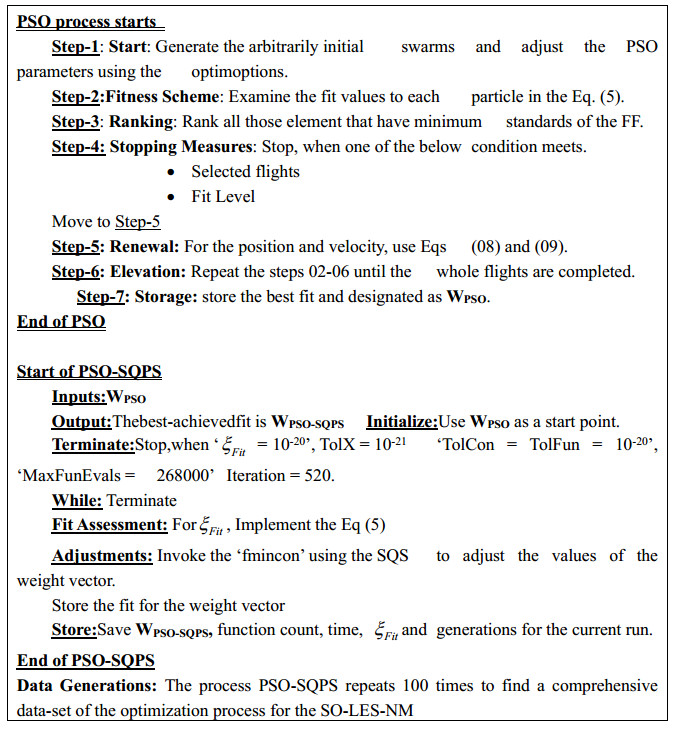









 DownLoad:
DownLoad:
